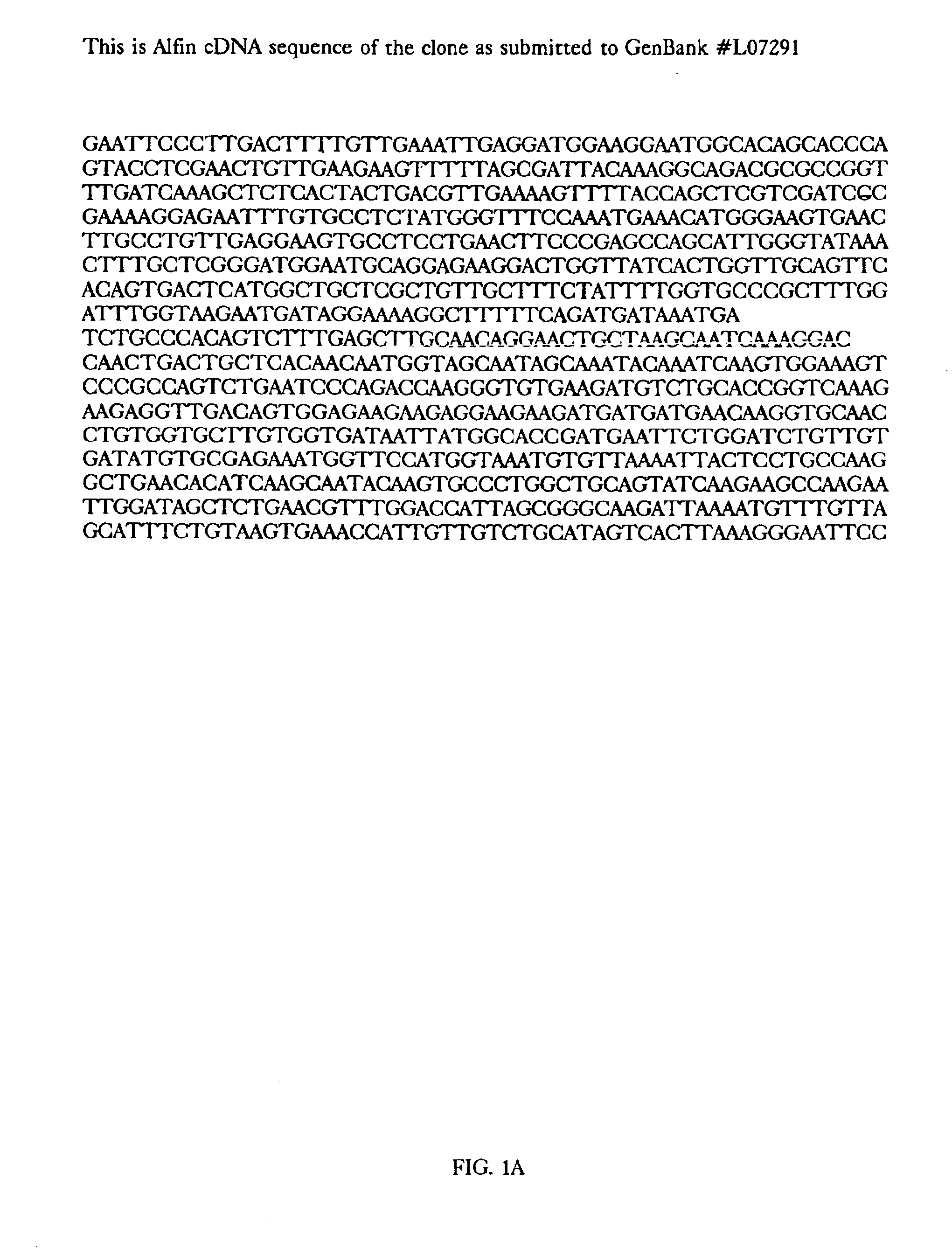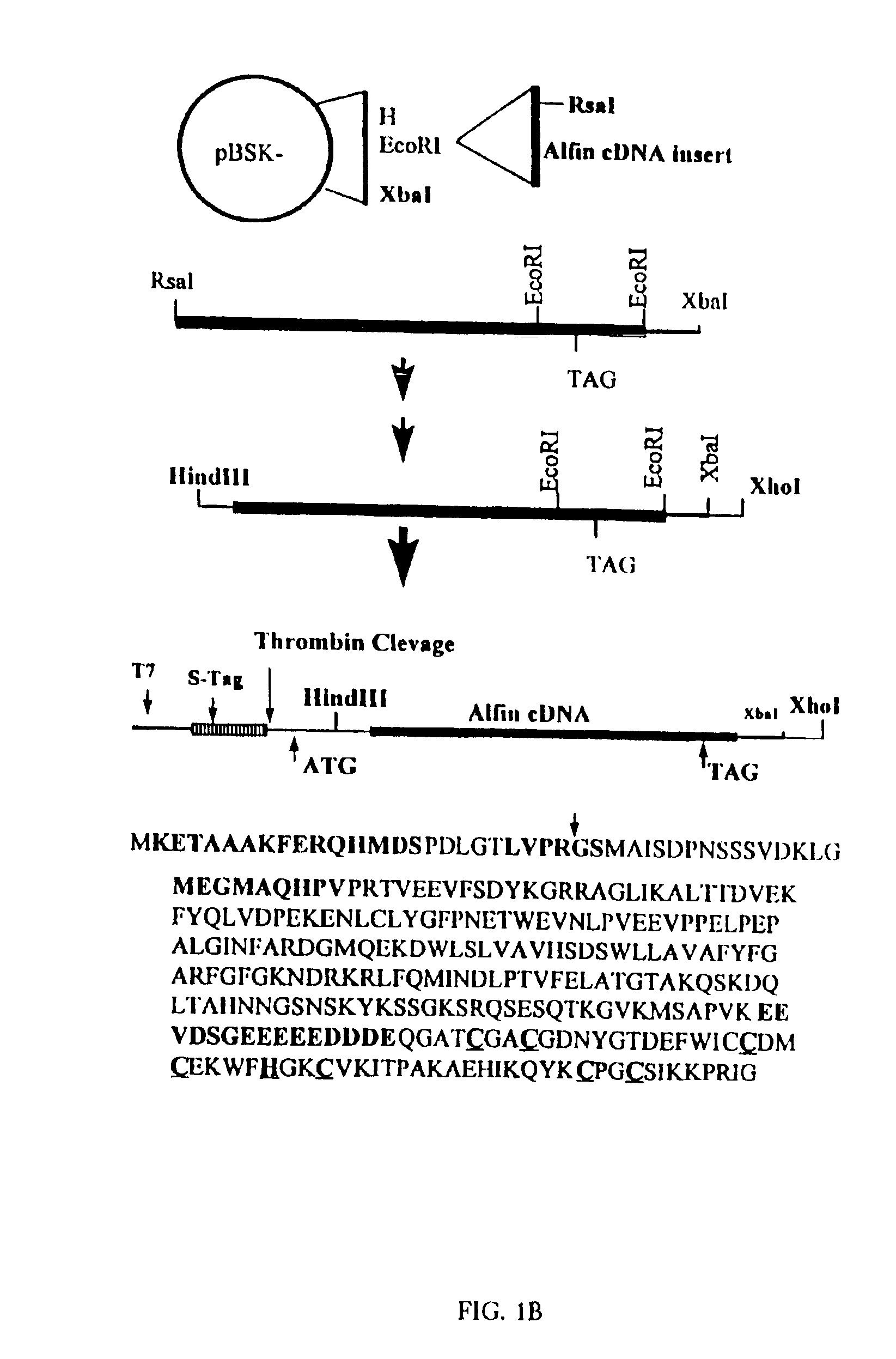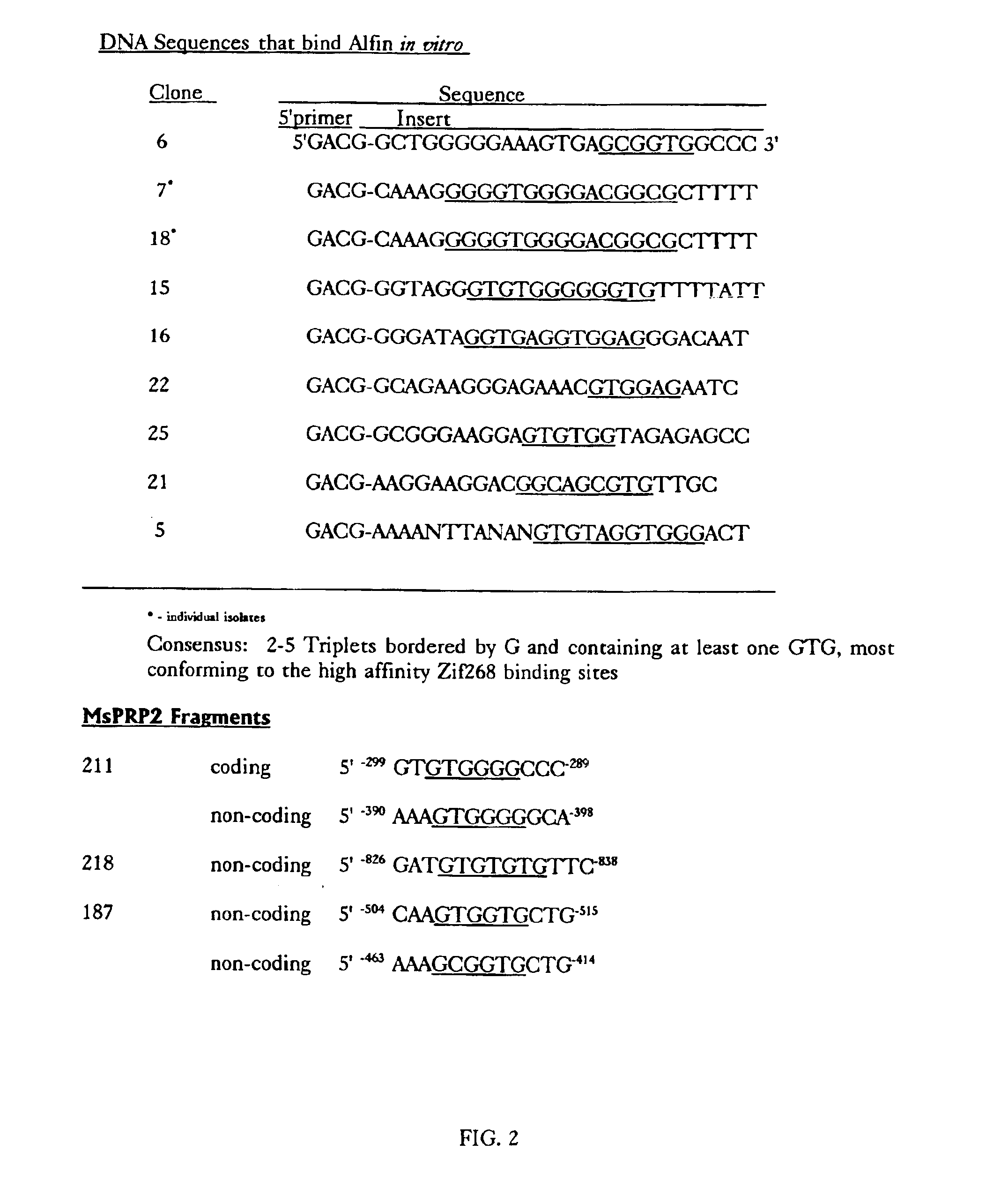Expression of Alfin 1 and methods for producing transgenic plants having increased root growth and root specific gene activation
a technology of alfin 1 and gene expression, applied in the field of alfin1 gene, can solve the problems of unrecognized molecular mechanisms by which plants can acquire improved long-term salt tolerance and maintain productivity, and achieve the effect of improving salinity tolerance of plants and enhancing expression of the endogenous msprp2 gen
- Summary
- Abstract
- Description
- Claims
- Application Information
AI Technical Summary
Benefits of technology
Problems solved by technology
Method used
Image
Examples
Embodiment Construction
[0017]Since Alfin1 cDNA was cloned by differential screening, the function of Alfin1 as a potential regulatory factor in plant roots was not known and needed to be demonstrated. See FIG. 1, in which the Alfin1 cDNA sequence (SEQ ID NO: 2) and deduced amino acid sequence are shown. Cys and His residues comprising the putative zinc finger are underlined. Dashed line indicates strongly acidic region of the protein. If Alfin1 were to act as a transcription factor in root specific regulation, DNA binding of the protein might be expected. To test for sequence specific DNA binding, recombinant Alfin1 protein was first expressed in Escherichia coli from the construct shown in FIG. 1B, in which the schematic representation of the pET-29b construct for Alfin1 fusion protein is shown. The top line of the amino acid sequence shos the S-Tag and the biotinylated thrombin cleavage site of the vector. The Alfin1 sequence below shows in bold the nine N-terminal amino acids deleted in the construct, ...
PUM
| Property | Measurement | Unit |
|---|---|---|
| size | aaaaa | aaaaa |
| biotic environmental stress | aaaaa | aaaaa |
| stress tolerance | aaaaa | aaaaa |
Abstract
Description
Claims
Application Information
 Login to View More
Login to View More - R&D
- Intellectual Property
- Life Sciences
- Materials
- Tech Scout
- Unparalleled Data Quality
- Higher Quality Content
- 60% Fewer Hallucinations
Browse by: Latest US Patents, China's latest patents, Technical Efficacy Thesaurus, Application Domain, Technology Topic, Popular Technical Reports.
© 2025 PatSnap. All rights reserved.Legal|Privacy policy|Modern Slavery Act Transparency Statement|Sitemap|About US| Contact US: help@patsnap.com



